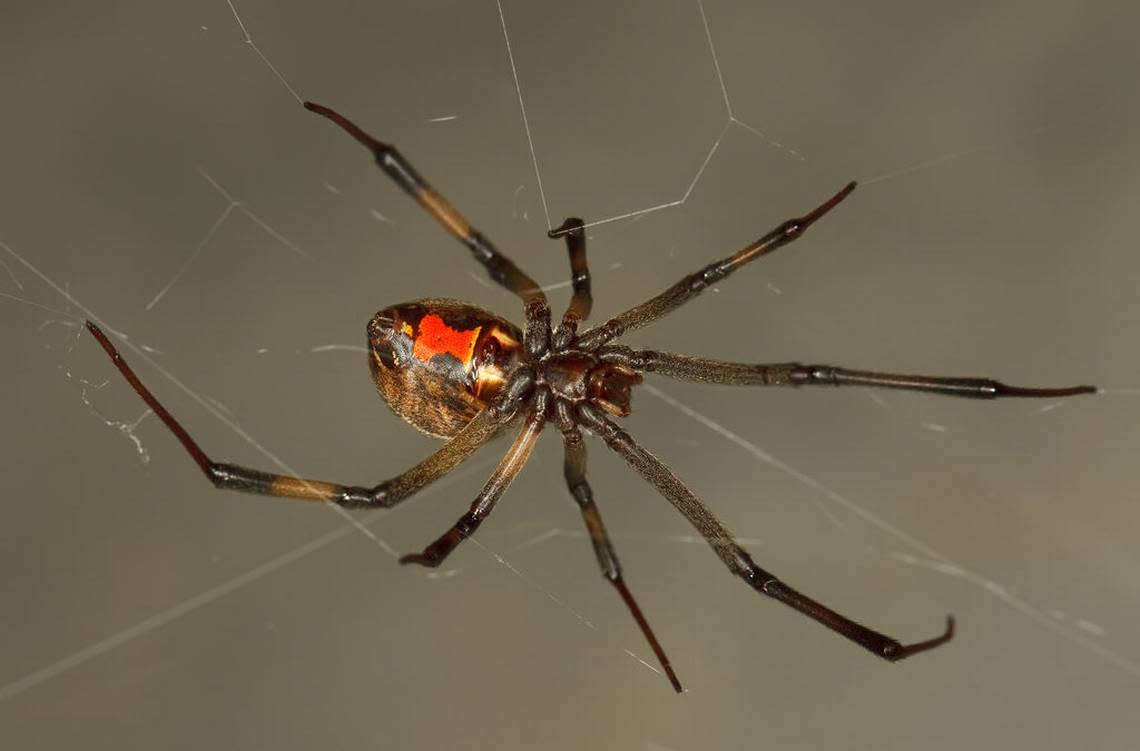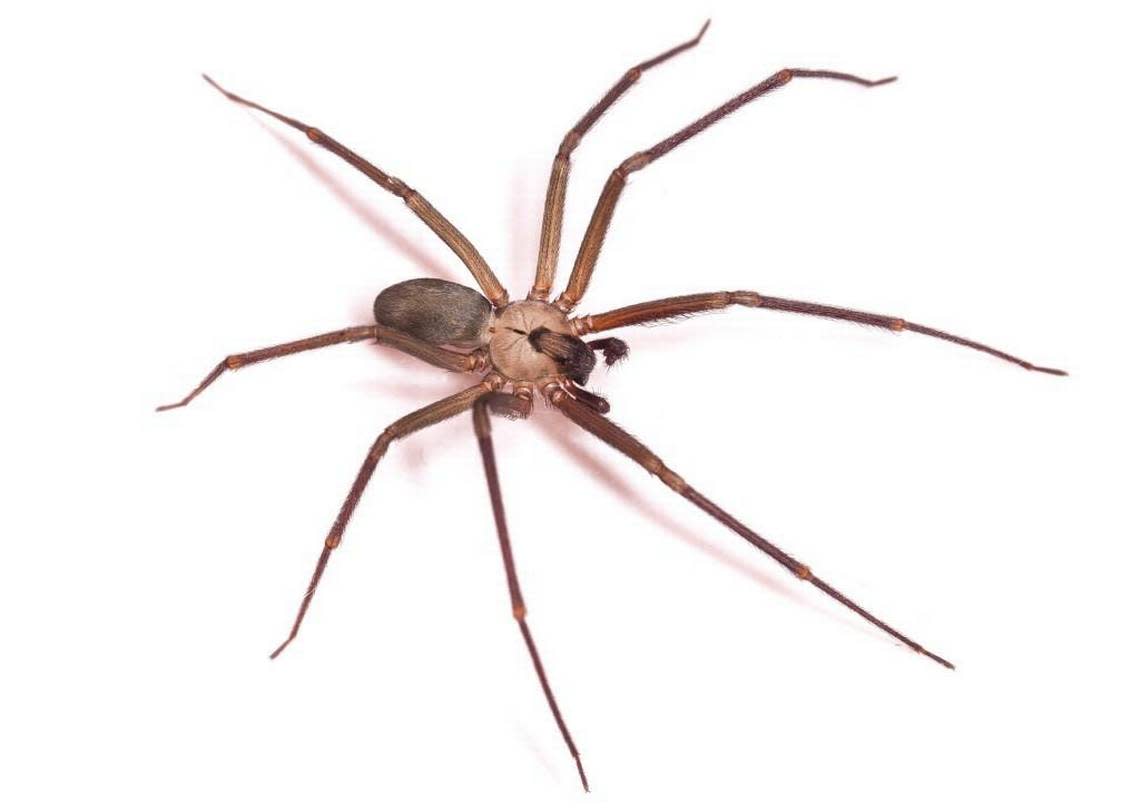Here’s the truth about the 4 venomous spider types in SC and how to keep them out of your home
There are a host of dangerous creatures lurking around South Carolina and spiders are no exception.
The Palmetto State has four different types of spiders with venomous bites. But how dangerous are these crawly critters to South Carolinians? And how can homeowners best keep them out of their properties?
According to the Mayo Clinic, the bites from venomous spiders in South Carolina can cause some serious signs and symptoms. Deaths from their bites are rare, but the discomfort and pain they can cause shouldn’t be taken lightly.
Below are details on the four types of venomous spiders in South Carolina and how to keep them out of your home.
Types of venomous spiders
Of the four venomous spiders in South Carolina, three are from the widow family: the southern black widow, the northern black widow and the brown widow, according to the Clemson University Cooperative Extension. The fourth venomous spider is the brown recluse. Widows prefer to spend their time in crawlspaces, water meter boxes, wood piles and other secluded areas. The brown recluse during the day likes to rest in closets, boxes, under furniture, in attics under insulation and in ceiling light fixtures.
Female southern black widows exhibit the well-known hourglass shape while males do not, instead having red spots on the top or bottom of their abdomen.
The female northern black widow is similar in color and size to its northern counterpart, but instead of an hourglass, the red on its body shows as splotches or dots. Sometimes the marks will look like an hourglass split in the middle, or an incomplete hourglass.
Brown widow spiders are gray to brown in color with white and black markings on the top surface of their bulbous abdomens. The “hourglass” marking on the under surface of the abdomen is yellow to orange, and the legs have dark bands.

The brown recluse is small and light brown to yellow in color. The primary key to identification are the three pairs of eyes.

Here are the signs of widow and recluse spider bites and the symptoms that accompany them, according to the Mayo Clinic.
Widow spider bites
Redness, pain and swelling: You might have pain and swelling around the bite, which can spread into your abdomen, back or chest.
Cramping: You might have severe abdominal rigidity or cramping, which is sometimes mistaken for appendicitis or a ruptured appendix.
Nausea, vomiting, tremors or sweating: You might experience nausea, vomiting, tremors or sweating alone or in combination.
Recluse spider bites
Increasing pain over the first eight hours after the bite.
Fever, chills and body aches.
A bite wound with a pale center that turns dark blue or purple with a red ring around it.
A bite wound that grows into an open sore (ulcer) with the skin around it dying.
Recluse spider bite treatment
First aid treatment for brown recluse spider bites should focus on keeping the affected area clean and protected, according to the University of Pittsburgh Medical Center. If blistering or a bull’s eye-shaped wound develops, visit an urgent care facility immediately.
A physician will examine the brown recluse spider bite and prescribe antibiotics to prevent infection. In extreme cases, such as in cases of tissue death, surgery and hospitalization may be required.
Black widow spider bite treatment
Black widow spider bites require immediate medical attention. Call 911 immediately if you think you have a black widow spider bite and are having trouble breathing or experiencing full-body symptoms, such as shock.
You may need immediate medical transport depending on the severity of your symptoms.
If you’ve been bitten, visit an emergency department at your local hospital to seek treatment for your spider bite. On the way, ice the affected area to treat symptoms of swelling and pain.
How to keep venomous spiders out of your home
According to Aiken Pest Control, the best way to prevent dangerous spiders from settling in your home is to keep it clean.
“They need places to hide when they come indoors, so try to keep your home bright and well lit and eliminate clutter in basements, closets and attics,” Aiken states.
And on the outside of your home, make sure to seal crevices and homes that spiders could use to gain access. Also, check window screens and replace and repair any with holes. Be sure to check your foundation for any cracks that need to be sealed as well.
Here are a few natural methods and repellents to minimize spider populations in your home, according to Farmers’ Almanac.
White vinegar
Vinegar spray can work as an organic pest control, specifically for spiders, Farmers Almanac says. It contains acetic acid, which gives it a sour taste and odor that spiders dislike. Spray it around your home, concentrating on the kitchen and entrances where bugs may be coming in.
Citrus
Like vinegar, spiders aren’t big fans of citrus for the same reason. You can keep a bowl of citrus fruit on the kitchen counter to keep spiders out. Another method is to rub leftover citrus peels along windowsills and doorways.
Mint
Most bugs, including spiders, despise mint. Add peppermint essential oil to water in a spray bottle to use around your home. Also try crushing some dried mint leaves and put them in little sachets in your kitchen cupboard. Mint tea bags can also be used.
Diatomaceous earth
First off, what is diatomaceous earth? It’s made of fossilized remains of a particular kind of algae called diatoms, which have outer shells made of silica. The skeletons of diatoms are found and collected in sediment at the bottom of rivers, lakes and oceans.
The white power basically absorbs all of the moisture out of spiders and other insects, causing them to dehydrate. Sprinkle some of the substance around areas where you notice bugs.
You can also mix 1 tablespoon of it in a spray bottle of water. Spray it around the outside of your home where you see spiders.
Cedar
The smell of cedar is another spider repellent. Drop some cedar blocks and chips around your home and inside your house.
Horse chestnuts
If you can get access to horse chestnuts, place a few on your windowsills or along baseboards. They have been known to keep spiders at bay.
